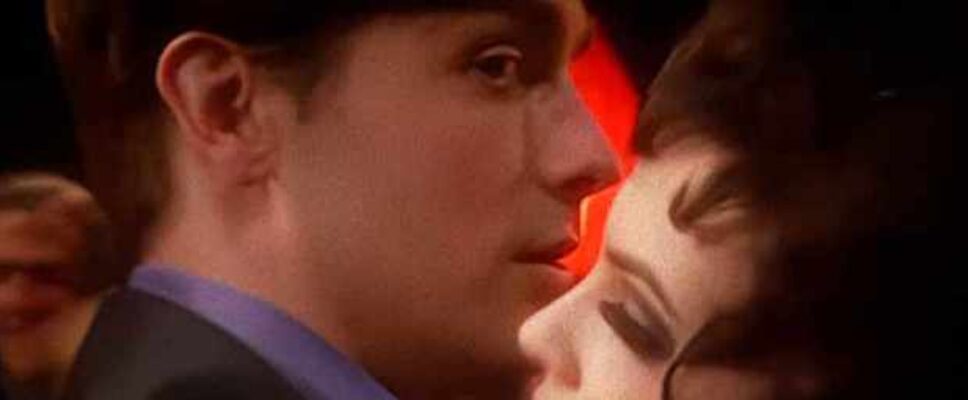Teresa Reviews “Third Girl” (2008)
Teresa reviews “Third Girl” (2008)
Fidelity to text: 3 knives
![]() Changes galore but the plot remains and, dare I say it? The film’s an improvement over the novel.
Changes galore but the plot remains and, dare I say it? The film’s an improvement over the novel.
Quality of film on its own: 3½ knives
![]() Gorgeous to watch but the last fifteen minutes drag.
Gorgeous to watch but the last fifteen minutes drag.
Read more of Teresa’s Agatha Christie movie reviews at Peschel Press.
Also, follow Teresa’s discussion of these movies on her podcast.

So did her detectives. Poirot (who should have been about 130 years old in Third Girl) is confronted by the fate of irrelevance and obscurity when Norma Restarick marches into his flat, begs for help, and then pronounces him to be “too old” to help her. London was in the midst of the swinging ’60s, and anyone over thirty was too old. To Nora, Poirot must have seemed like one of Jonathan Swift’s eternally-aging Struldbruggs. He’d lived decades too long and needed to make way for a new generation.
Unfortunately, Third Girl is one of Agatha’s decidedly lesser novels. It’s poorly thought out and needed an editor very badly. But it also accurately reflected it’s the times, including copious drug use.
I was apprehensive when we sat down to watch it, because mod London had to morph into 1937, when Great Britain still had an empire and no one had ever heard of Mary Quant.
And it worked! The script and director managed to pull a rabbit out of a hat.
Not a perfect rabbit, but a much livelier, healthier rabbit than I’d have thought possible. The ending fell apart, but you can’t have everything.

The second girl is Frances. Claudia found her through an advert asking for a roomie. Frances is hot, buxom, uninhibited (she poses nude for David Baker), and would fit right into the sixties. She claims to like Norma but she’s the one who brought the ice cream to the party. Frances looks suspiciously like Norma, if Norma were a wild and free spirit, untouched by trauma. Frances, as it turns out, has a secret past.
The third girl is Norma. She’s falling apart, traumatized by her father’s abandonment at age five, and her mother’s suicide at age seven. Despite everyone knowing dear old dad’s purpose in life was to set a bad example, Norma’s pined for him for nearly twenty years. She accepts him completely, desperate to have a father who loves her. An oddity in both novel and film is that Norma is rich yet as the third girl, she rents the smallest bedroom in the flat. She could afford an entire flat of her own.
The film’s first major flaw was removing the main way Norma was gaslit. Frances and Robert Orwell rely on suggestion, innuendo, and well-placed knives to make Norma think she’s a crazy murderess. Norma is mentally fragile, but that’s not enough. Hallucinogens have been used since biblical times. The 1920s and ’30s saw plenty of cocaine usage, along with opium and hashish. Frances could have easily dosed Norma with stimulants to keep her from sleeping, opiates to alter her sense of time, and hallucinogens so she didn’t know what was real. There was no reason to drop this plot point and every reason to keep it. The stimulants alone would explain why Norma slept for fourteen hours in Poirot’s flat. Once off them, she crashed.
The second major flaw was Robert Orwell. From out of the blue, he usurped Andrew Restarick’s place in the sun. We needed to see more scenes showing how Andrew was an irresponsible ne’er-do-well who got up to no good in Africa. How did he meet Robert Orwell? Did they run cons together? How well did they know each other so that Robert could pass as Andrew? A single line of dialog from an expat visiting England would have sufficed. Then, when Orwell’s con to swindle Norma out of her fortune was revealed, he went quietly! A man like that would have denied, argued, and then leaped for a window, allowing Hastings to chase him down to face justice. Wait. No Hastings.
The third major flaw was Poirot’s summation at the climax. It went on far too long and it was murky. Much of it could have been shown during earlier scenes with only a few seconds of flashback to explain to the audience what had actually happened versus what they thought they saw.
A major plus in the film was Ariadne. She lit up the screen. She out-Hastings Hastings, other than in that needed chase scene at the climax. I can’t see Ariadne leaping over furniture to tackle the villain. She did have the wonderful chance to tail David Baker, doing something every mystery writer dreams of. Getting coshed on the head will let her write much more authentic scenes of mayhem, so she benefited there too.



I liked David Baker, bohemian artist. He got a major character overhaul, turning him from a ne’er-do-well user into someone who genuinely cared for Norma. Sadly, wardrobe didn’t dress him like a peacock. He should have been channeling Oscar Wilde, in rose-colored velvet with lace cuffs. Poirot looked more like a peacock. Where was David Baker’s sharkskin suit and spectator shoes? Thirties gentlemen could be flamboyant and he wasn’t.
Most of all, Jemima Rooper was great as Norma. She showed us Norma’s mental fragility, her need to be believed and cared about. She’s the heart of the movie. She becomes the main girl, the first girl, the girl who makes it out alive.

